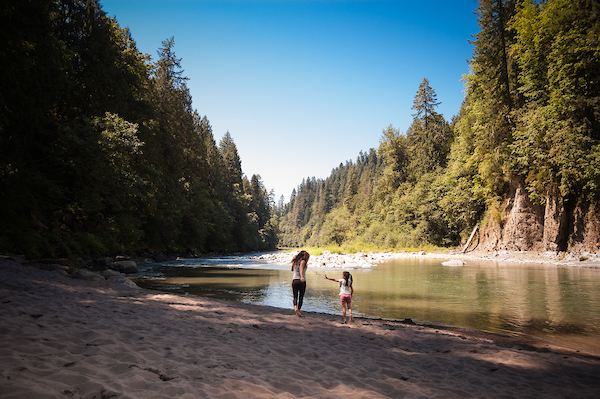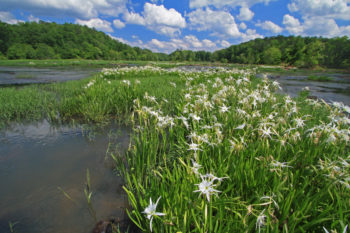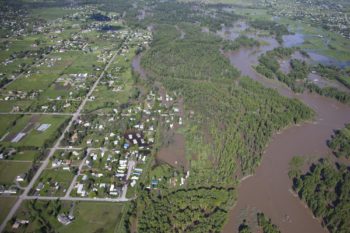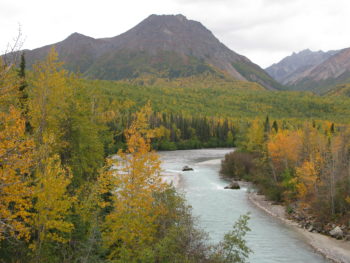On this Earth Day, we must commit to battling climate change – every day
Climate change is already having devastating impacts across the country, but it’s not too late to act. In fact, the tide may be about to turn.

In Indiana, a woman clutches her small dog and a few belongings as she wades through waist-deep floodwaters, her ruined home visible in the background.
In Texas, a rancher kicks at the dry earth and remarks that there should be grass here now, not billowing sand.
In Ohio, a mother and her two kids haul bottled water into their kitchen, their tap water rendered unsafe to drink by toxic algae.
These are the faces of climate change, the warming of the earth’s atmosphere fueled primarily by the burning of fossil fuels and the impacts of that warming on long-term weather patterns. For decades, scientists have warned of rising temperatures and the potentially devastating impacts of a warming planet, and that those impacts would strike freshwater systems – rivers, lakes, wetlands, the hydrologic cycle itself – first and hardest. Today, the evidence is irrefutable. Global temperatures have been swiftly on the rise – the last five years have been the hottest on record. And in places like Indiana, Texas, Ohio and across the country, people are seeing, suffering, and paying for those impacts every day. The cold, or rather, warm hard facts are these:
- In 2017, Hurricane Harvey produced the single most intense rain event in recorded U.S. history, and the U.S. could see up to an additional 400% increase in extreme downpours by the end of this century.
- By 2050, 32% of U.S. counties will be at high or extreme risk of water shortage
- In 2017, there were over 170 toxic algae blooms recorded in the U.S.
- Economic losses from extreme weather totaled $653 billion over the past two years alone.

Flint River, GA | Photo by Alan Cressler
Ever greater and more intense flood, drought, and fouled water – what’s happening? It’s the basics of physics and weather driven to extremes by global warming. The warmer air and oceans create storms of increased intensity and duration that pick up and hold ever more amounts of water as they move, producing rain storms in the southern and midwestern U.S. unprecedented in their frequency and intensity. In more arid parts of the country, particularly the Southwest, rising temperatures affect rainfall, humidity and wind patterns, drying the soil and increasing the pace of evaporation, aggravating and expanding areas of drought. And warming water temperatures create ideal conditions for explosive algae growth, creating the potential for more toxic blooms that foul urban source water intakes and render freshwater undrinkable.
But we have always had floods, droughts, and water pollution events, right? Sure. It’s not that these things are new. It’s that due to climate change they’re happening with much more frequency and severity, exacting an ever-greater toll in lives, property, and the health of human and natural communities. People and communities, wildlife and habitats, rivers and streams, are adapted to a set of conditions – temperature ranges, rainfall amounts, snowpack, flows – that have been more or less predictable for thousands of years. Climate change is scrambling all of that, with devastating results.

Clark River, MT | Photo by Kestrel Aerial Services
At a dark point in World War II, a small turn of fortune in the long struggle prompted Winston Churchill to hopefully observe, “This is not the end. It is not even the beginning of the end. But it is, perhaps, the end of the beginning.” After decades of controversy, much of it contrived by the fossil fuel industry and its boosters, those that deny the existence of climate change, its impacts and its causes are a swiftly shrinking minority. The evidence, both the scientific and “seeing-is-believing” varieties, is so overwhelming that attention is turning to where it should be – what to do about it.
Fortunately, there are solutions. Through global accords like the Paris Agreement, the countries of the world are at long last moving to set and pursue ambitious targets for reducing the build-up of carbon in the atmosphere by reducing dependence on fossil fuels, reforestation, changes in agricultural practices and other means, aiming to slow and ultimately reverse global temperature rise. Alternatives to fossil fuels, renewable, low carbon sources of energy such as wind and solar once thought to be at best uneconomical and at worst a pipe dream, are increasing production at a spectacular rate. Growth in the production of wind energy since 2001 has exceeded expectations by 2000%. Solar energy has done even better, producing at a pace 109 times expectations. And as costs of production drop dramatically and energy storage technologies improve wind and solar are becoming increasingly attractive options in energy markets. Between government action, market forces, and consumer demand for clean energy, hope increases that a sharp drop in fossil fuel use world-wide will halt and reverse rising global temperatures. There is a tremendous amount left to do, and it will take a long time to do it. It’s still an open question whether the world, particularly the United States, will summon the political will to truly confront climate change. But we may have reached the end of the beginning.

Talkeetna River, AK | Photo by Scott Bosse
However, strategies to reverse global climate change will require many years to take hold, and its effects are already being felt. In the meantime, we must work to make natural systems like rivers, streams, lakes and wetlands as resilient as possible to climate change and its effects. That’s where the work of American Rivers comes in. Healthy, well managed rivers systems, including headwaters, wetlands, and floodplains, are an important bulwark against climate change, providing buffers against water shortage, helping relieve damage from floodwaters, ensuring water quality, and providing refuge for fish and wildlife.
American Rivers’ river protection initiatives prevent infrastructure, mining and oil and gas development from degrading healthy rivers, preserving them as sources of water supply and refugia for fish and wildlife under increasing pressure from climate change. Our restoration programs reconnect fragmented rivers, opening pathways for fish to escape increased temperatures and saltwater intrusion. The work of our floodplain restoration and management team relieves flood pressure on communities by giving rivers the room they need when rain events overwhelm their banks, and our clean water programs help cities manage water resources and promote green infrastructure to keep urban water supplies clean. American Rivers’ policy staff promotes government investments in better floodplain management, drought contingency planning, and protection of small streams and wetlands for their importance to downstream supply and quality.
On this Earth Day, we need to redouble our commitment to taking on climate change every day, by doing everything we can to bring global temperatures down and ensuring that its inevitable impacts are minimized. Experts maintain that the best defense against the impacts of climate change is healthy and resilient ecosystems. Fortunately, protecting and restoring freshwater ecosystems has been American Rivers’ business for over 45 years.
Happy Earth Day, everyone!



